Bulbs
Flower Basics
Flower Beds & Specialty Gardens
Flower Garden
Garden Furniture
Garden Gnomes
Garden Seeds
Garden Sheds
Garden Statues
Garden Tools & Supplies
Gardening Basics
Green & Organic
Groundcovers & Vines
Growing Annuals
Growing Basil
Growing Beans
Growing Berries
Growing Blueberries
Growing Cactus
Growing Corn
Growing Cotton
Growing Edibles
Growing Flowers
Growing Garlic
Growing Grapes
Growing Grass
Growing Herbs
Growing Jasmine
Growing Mint
Growing Mushrooms
Orchids
Growing Peanuts
Growing Perennials
Growing Plants
Growing Rosemary
Growing Roses
Growing Strawberries
Growing Sunflowers
Growing Thyme
Growing Tomatoes
Growing Tulips
Growing Vegetables
Herb Basics
Herb Garden
Indoor Growing
Landscaping Basics
Landscaping Patios
Landscaping Plants
Landscaping Shrubs
Landscaping Trees
Landscaping Walks & Pathways
Lawn Basics
Lawn Maintenance
Lawn Mowers
Lawn Ornaments
Lawn Planting
Lawn Tools
Outdoor Growing
Overall Landscape Planning
Pests, Weeds & Problems
Plant Basics
Rock Garden
Rose Garden
Shrubs
Soil
Specialty Gardens
Trees
Vegetable Garden
Yard Maintenance
How to Make a Small Waterfall
How to Make a Small Waterfall. A small waterfall in a backyard can be a great addition that provides an interesting and relaxing focal point to even a very small yard. All of the supplies are inexpensive (everything together can be purchased for under $100), and once you have all of them, a small waterfall project only takes an hour or two to...

A small waterfall in a backyard can be a great addition that provides an interesting and relaxing focal point to even a very small yard. All of the supplies are inexpensive (everything together can be purchased for under $100), and once you have all of them, a small waterfall project only takes an hour or two to complete. Unlike some pond and waterfall kits, these instructions use a small but deep tub (the handled kind that can often be found on sale at a discount store), allowing for a greater quantity of water and cooler water temperatures, which is better for plants, animals, and lack of algae. Therefore, these instructions will help you create a functional, elegant waterfall that stays inexpensive and doesn't break the bank.
Things You'll Need
20 gallon blue or black handled tub/muck bucket
small watercourse piece from Lowes or other home garden store
1 landscaping brick
1 small fountain pump (can be bought at Super Walmart, Lowes etc)
sissors
3 ft of tubing that match the diameter of your pump (ask your local hardware store for help)
small bottle of water decholorinator (can be purchased at petstore)
1-2 bags black mulch
approximately 10 flagstones or other irregular flat paving stones. You can buy a set glued on wire mesh for around $10 and then pull them apart and/or break them into smaller pieces.
2 small flat rocks about 3/4"-1" thick
small potted plant and/or other heavy flat bottomed garden ornament
hammer
disposable plastic one gallon pot
Outdoor extension cord (if needed)
Choose a location for your waterfall. For this small one, it is easy to create a surrounding landscape if it is against a wall or fence. If you want to have water plants in it (which will help with algae) then you will want it in a fairly sunny place.
Cut each rope handle on your inexpensive tub through the middle and pull the ends out.
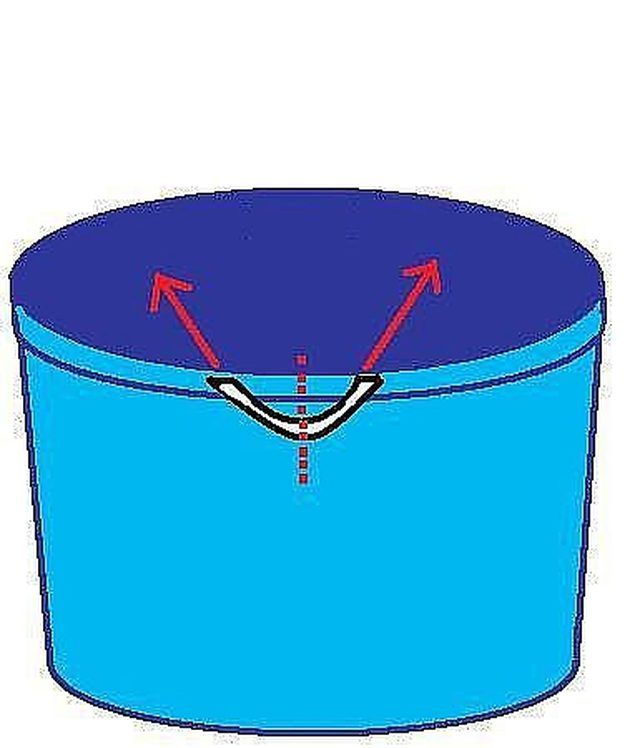
Dig a level hole that is slightly wider than the tub and place the tub in the hole. Back fill the hole around the tub so that the dirt is packed and exactly level with the rim.

About six inches to the right or left of the tub/hole, make sure the ground is packed firmly and place the landscaping brick lengthwise on the dirt. This will be a level base for the water course/the top layer of the waterfall.

Set the water course piece on top of the brick so that the spout end extends about 4 or so inches over the tub. Carefully and firmly pack dirt around the brick and bottom of the watercourse so that only the rim is showing in the side facing you (away from the fence or wall). Only cover part of the spout underside and the back. Use enough to hold it in place but not too much were the dirt will be high or loose and erode easily from water splashed out from the waterfall or rain.
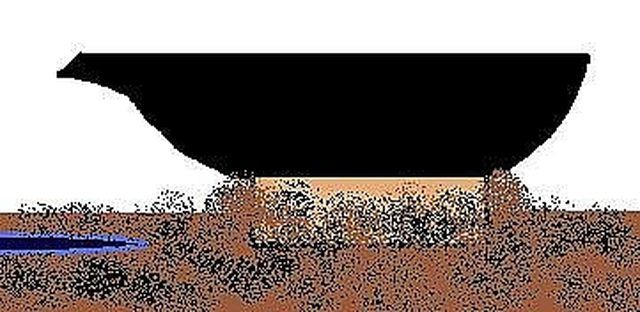
Cut open the fountain pump package. Attach the tubing. Fill the tub with water using a hose and put the plastic pot upside down in the tub of water letting it fill so that it sinks. The pot is for the pump to set on so that is not hanging which is bad for it. Place the pump on the pot and feed the tubing around the back of the water course piece hiding it between the course and the fence or wall. Cut the tubing so that the end extends into the water course from the back corner about 6-8." Use dirt and some mulch to make the surface next to the watercourse where the tubing rests flat.
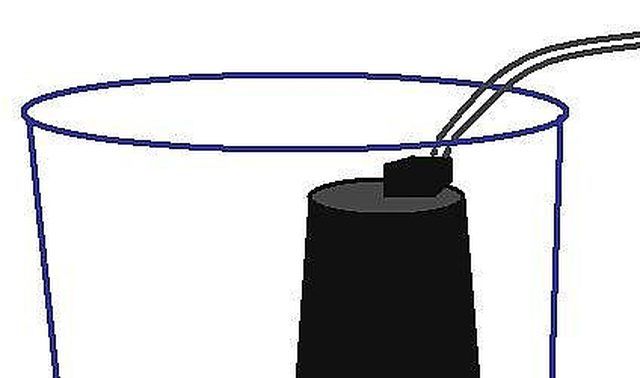
Place the two stones on either side of the tubing and a flag stone across the top of them. This will keep the tubing from flattening and allow the water to flow freely, keeping your waterfall running well. If the tubing is restricted, it will put strain on the pump which will burn out. Place a potted plant and/or garden ornament on top of the paving stone for decoration.
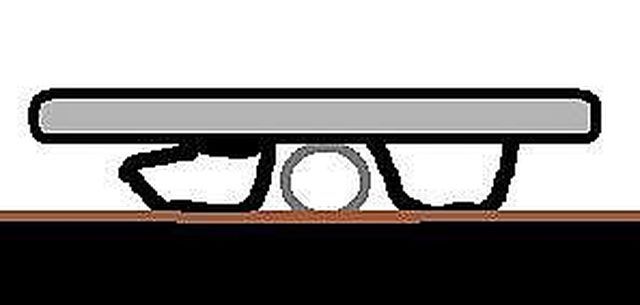
Run the cord from the pump between the watercourse and the fence as well. plug it into an outlet or outdoor extension cord. Let the pump begin to run. Watch the water in the watercourse. Make sure it is level and that the water falls into an appropriate place in the tub.
Use mulch to finish the hill around the watercourse and taper off to the right or left side of the small waterfall and down to the little pond. Blend in with the surrounding landscape.
Pull paving stones off of mesh if needed. Fit them together like puzzle pieces around the rim of the tub to hide the edge. Break them into smaller pieces with a hammer if needed.

Carefully plant a few small plants around your waterfall/into the hill to create a pleasant effect. Add the appropriate amount of dechlorinator. After a few days, try adding a few water plants, especially oxygenators like hornwort and above water plants that shade to help keep the water clear.
Enjoy your beautiful small waterfall! Watch the wildlife seek out the water and don't be surprised if a frog takes up residence.
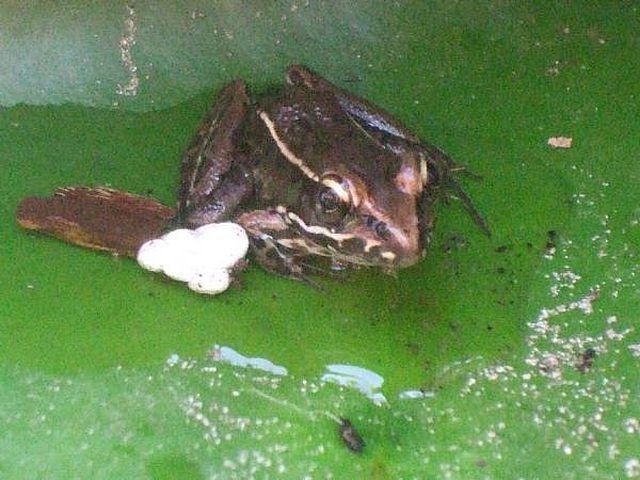
Tips & Warnings
Use some waterlilies to provide shade underwater and help prevent algae
Since the tub is deep, water plants might have to be placed on turned over pots like the pump
Plant crawling plants like sweet potato vine near the small waterfall. These will grow roots down into the mulch and soil helping hold it in place.
Check for erosion and add more dirt or mulch if necessary
Select a location with sun if you want water plants
Buy your supplies in the winter to keep them even more inexpensive